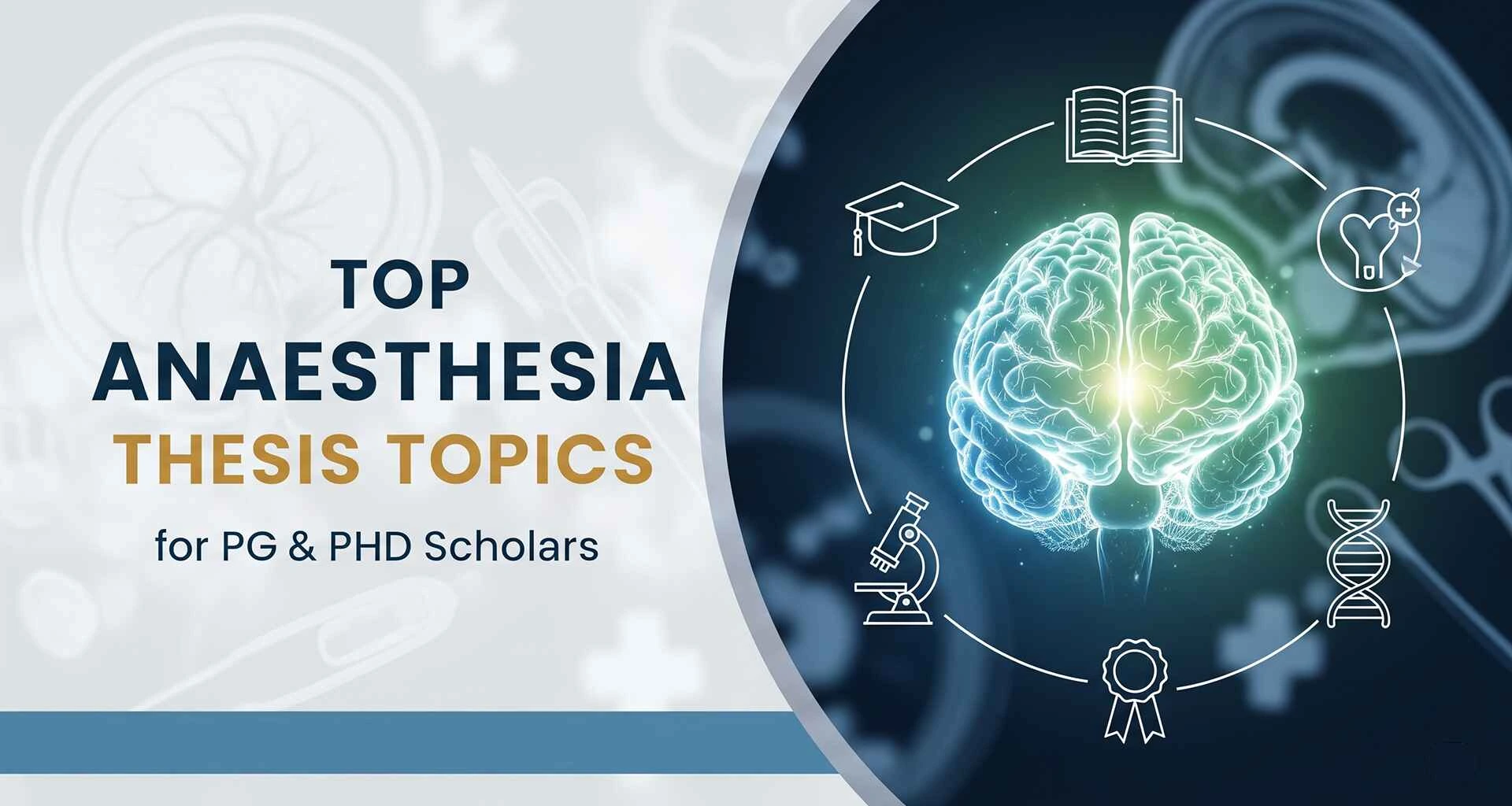
Katy Richard.K
There is a rapid evolution of the speciality of anaesthesia, with improvement in drugs, techniques, and technology. However, for potential specialists, the selection of the correct thesis topic in anaesthesia is an important academic step. While doing PG studies like MD, DA, or DNB, or a PhD, one's thesis is an important and challenging hallmark, which assesses his/her research capacity, analytic acumen, and clinical acumen.
While PG students tend to concentrate on applied, patient-oriented clinical research, PhD students go in-depth into elaborate research questions and theoretical developments. This blog is divided into two distinct sections—PG thesis topics and PhD research topics after which expert advice, avoidable pitfalls, and a brief conclusion shall be provided to navigate your academic journey.
Choosing a proper thesis theme is a count of placing the desired, feasibility, and research relevance in tandem with one another. A proper subject matter would be pertinent to the scientific practice, scientifically sound, and additionally viable inside the reachable resources.
Determine your subject of interest – Choose a region of anaesthesia that pastimes you so that you can remain involved in the lookup process.
Test medical value – Pick a theme with direct relevance to affected person care or medical exercise guidelines.
Think about present day assets – Ensure your organization has admission to the equipment, cases, and expert understanding required.
Check for gaps in the literature – Read what has been posted and discover areas with sparse or conflicting research.
Consider feasibility and ethics cautiously – Pick a learn about that is inside your timescale and proper to ethics committees.
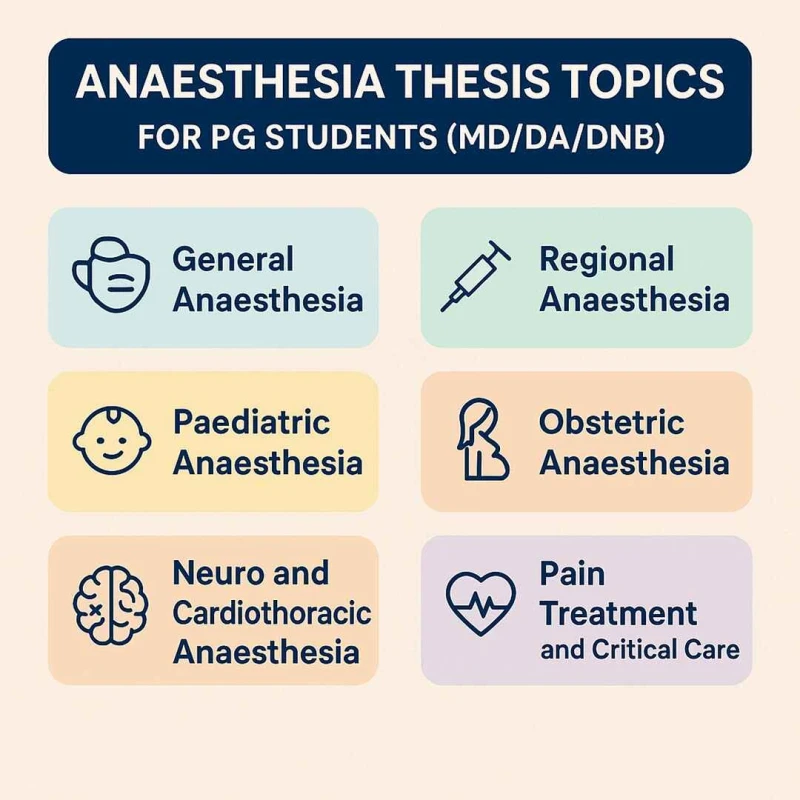
Choosing the appropriate thesis topics for PG study means aiming at clinically relevant research that serves to improve patient outcome and procedural safety. Choose your subject based on the demographics of patients available, operating surgical specialities, and institutional expertise you have access to.
Ideal when you wish to pursue pharmacology, depth of anaesthesia, and systemic impact in diverse surgical environments.
Comparative analysis of BIS-guided anaesthesia and conventional monitoring.
Propofol vs. sevoflurane in older patients: haemodynamic stability results.
Impact of anaesthetic selection on postoperative cognitive dysfunction.
Low-flow anaesthesia: effect on recovery profiles and economic considerations.
Role of preoperative carbohydrate loading in anaesthetic recovery.
Impact of opioid-free general anaesthesia on postoperative pain scores.
Comparative analysis of volatile vs. total intravenous anaesthesia in day-care surgery.
Ideal for students interested in spinal/epidural and nerve block techniques and their comparative advantages over general anaesthesia.
Ultrasound-guided brachial plexus block versus nerve stimulator methods.
Single-shot spinal versus continuous epidural analgesia for lower limb orthopaedics.
Comparative safety profile of ropivacaine and bupivacaine in spinal anaesthesia.
Adjuvants in regional blocks: dexmedetomidine versus clonidine outcomes.
Quadratus lumborum block versus transversus abdominis plane block in abdominal surgery.
Perioperative outcomes in obese patients undergoing regional versus general anaesthesia.
Postoperative quality of analgesia is continuous compared to single-shot nerve blocks.
This topic is optimum for those interested in special physiological and pharmacological aspects in children.
Sevoflurane vs. desflurane for day-care paediatric surgery.
Effects of preoperative techniques for reducing anxiety on anaesthetic induction.
Comparative evaluation of caudal block vs. TAP block in paediatric intra-abdominal surgery.
Pre-emptive role of midazolam vs. clonidine premedication in children.
Recovery profile following inhalational vs. intravenous induction in children.
Prevention of postoperative nausea and vomiting in children.
Safety of ketamine as an adjunct to paediatric anaesthesia.
Ideal for use in high obstetric case load hospitals, with emphasis on maternal and neonatal safety.
Comparison between epidural and combined spinal-epidural analgesia for pain relief in labour.
Low-dose spinal anaesthesia for caesarean section: haemodynamic stability results.
Levobupivacaine vs. bupivacaine comparison in labour analgesia.
Incidence of postpartum haemorrhage in general compared to regional anaesthesia.
Patient satisfaction in patient-controlled epidural analgesia.
Neonatal APGAR scores in various anaesthetic methods for C-section.
Impact of preloading vs. co-loading fluids on spinal-induced hypotension.
Most appropriate for students at tertiary care centres dealing with complicated surgeries.
BIS monitoring vs. clinical signs in neurosurgical depth of anaesthesia.
Hyperventilation vs. normoventilation impact on intracranial pressure.
Propofol vs. etomidate during induction of cardiac surgery.
Haemodynamic responses to off-pump vs. on-pump CABG anaesthesia.
Role of dexmedetomidine in neurosurgical sedation.
Effect of anaesthetic regimen on postoperative delirium in neurosurgery.
Anaesthetic technique for awake craniotomy: safety and results.
Ideal for those who are interested in postoperative management, ICU guidelines, and palliative environments.
Efficacy of multimodal analgesia in abdominal surgery.
Intravenous lignocaine infusion in perioperative pain treatment.
Opioid-sparing analgesia in ICU patients.
Chronic pain outcomes after early vs. delayed mobilisation following surgery.
Ketamine infusions for refractory cancer pain.
Dexmedetomidine sedation vs. propofol in ICU ventilated patients.
Patient-controlled analgesia vs. nurse-administered analgesia effectiveness.
PhD-level thesis topics in anaesthesia address superior, often multidisciplinary research, necessitating profound theoretical knowledge and extensive data collection over long periods. Select categories according to your passion for innovation, public health, or surgeries with high complexity.
For researchers interested in molecular mechanisms, drug metabolism, and systemic effects.
Pharmacogenomics of anaesthetic agents.
Anaesthetic-induced neuroprotection in ischemic brain injury.
Metabolic impacts of long-duration volatile anaesthesia.
Anaesthetic modulation of immune responses in cancer surgery.
Mechanisms of anaesthetic-induced preconditioning in cardiac surgery.
Long-term cognitive outcomes post-anaesthesia in elderly populations.
Anaesthetic drug interactions in multi-morbid patients.
Best for those with an interest in AI, automation, and new monitoring systems.
Artificial intelligence in predicting anaesthetic depth.
Closed-loop anaesthesia delivery systems.
Wearable biosensors for perioperative monitoring.
High-fidelity simulation in anaesthesia training.
Virtual reality for patient preoperative anxiety reduction.
Nanotechnology-based drug delivery in anaesthesia.
Smart infusion pumps and precision dosing.
For researchers combining anaesthesia with epidemiology and sustainability.
Environmental footprint of inhalational agents and strategies for minimising it.
Anaesthesia access inequalities in rural care.
Cost-utility of regional anaesthesia in public facilities.
Anaesthesia training gaps in low-resource settings.
Occupational risks of anaesthetic gas exposure.
Burden of anaesthesia-related complications worldwide.
Public health strategies to enhance perioperative care.
For researchers in high-volume, high-complexity surgical units.
Anaesthetic methods in awake craniotomies for tumour removal.
Anaesthetic modulation of neuroplasticity following brain surgery.
Comparative cerebral protection methods in cardiac surgery.
Long-term survival results following anaesthesia in cardiac transplant.
Anaesthetic depth and stroke risk relationship.
Intraoperative EEG monitoring innovations.
Volatile anaesthetics' cardioprotective effects.
Best suited for those combining anaesthesia knowledge with ICU medicine and long-term pain research.
Analgesic regimens in multi-organ failure patients.
Early vs. late tracheostomy results in ICU.
Prevention of chronic neuropathic pain after thoracotomy.
Anaesthetists' role in palliative care teams.
Pathophysiology of central sensitisation in surgical patients.
Efficacy of multimodal analgesia in cancer pain.
Prevention of delirium in the ICU.
For researchers interested in education, curriculum development, and ethical dilemmas.
Ethical aspects of anaesthetic care for high-risk procedures.
Simulation training for crisis management.
Anaesthesia teams' cultural competence.
Standardising informed consent processes.
Curriculum integration of ethics in anaesthesia residency programs.
Mentorship effectiveness in anaesthesia research.
Assessment of competency assessment tools.
Conducting a successful thesis is about doing more than choosing one of the numerous anaesthesia thesis topics—it's about adopting a well-formulated, systematic approach that makes your research credible, impactful, and academically robust. PG and PhD students have varying strategies due to differences in scope, depth, and expected output.
The main objective for PG students is to attain good clinical research skills and write a thesis that directly affects patient care in real life.
Select a sample size that you can actually fulfil during your training time and still be able to achieve statistical significance.
Pick research that will directly benefit anaesthetic practice, patient safety, or procedural efficacy for your department.
Utilise validated scoring systems, monitoring equipment, and assessment instruments to ensure reliability and consistency in findings.
Frequent consultations with your advisor avoid misdirection and ensure that your methodology is in line with academic demands.
Obtain all ethical clearances in advance, keep the patient confidential, and document informed consent accurately.
PhD research in anaesthesia requires a deep, often multidisciplinary endeavour to expand the limits of existing knowledge.
Including institutions doubles sample size, maximises external validity, and provides access to diverse populations.
Use regression models, meta-analysis, or survival analysis methods to provide robust and high-impact findings.
Identify a clear gap in literature and ensure your research is contributing something genuinely new to anaesthesia.
Document detailed lab notebooks, protocol books, and data logs so others can replicate your work.
Present your results at meetings, publish in indexed journals, and engage in professional networking to ensure the widest reach.
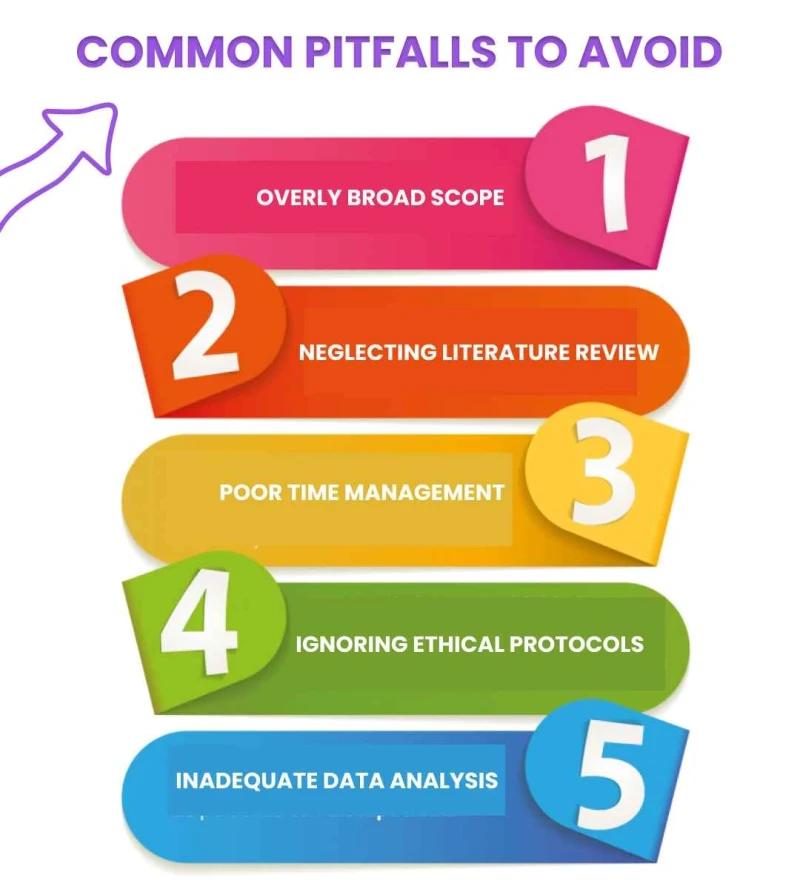
Even with a well-chosen topic, many scholars encounter avoidable mistakes that can derail their progress. Recognising these pitfalls early can save months of wasted effort.
Trying to answer too many questions at once dilutes the quality of your research. Narrowing your focus ensures depth and precision.
Without a thorough review, you risk repeating existing studies or missing key findings that could shape your research design.
Procrastination can lead to rushed data collection, incomplete analysis, and avoidable errors during submission. Create a timeline and stick to it.
Skipping consent processes or failing to maintain confidentiality can lead to ethical violations that may halt your project entirely.
Using the wrong statistical tests or failing to interpret results accurately undermines the credibility of your thesis and can lead to rejection.
Selecting the correct thesis topics in anaesthesia sets the tone for your research career. For PG students, the emphasis should be on clinical impact and achievable outcomes within the training period. PhD scholars, however, should aim for projects that advance the science of anaesthesia and contribute to academic knowledge on a national or global scale.
Whether your focus is patient care, technology, pharmacology, or public health, your topic choice reflects your professional vision. If uncertainty remains, seek expert guidance early in the process—making an informed choice today can define your career path for decades to come.

Top 5 Best Literature Review Writing Service for PhD Scholars
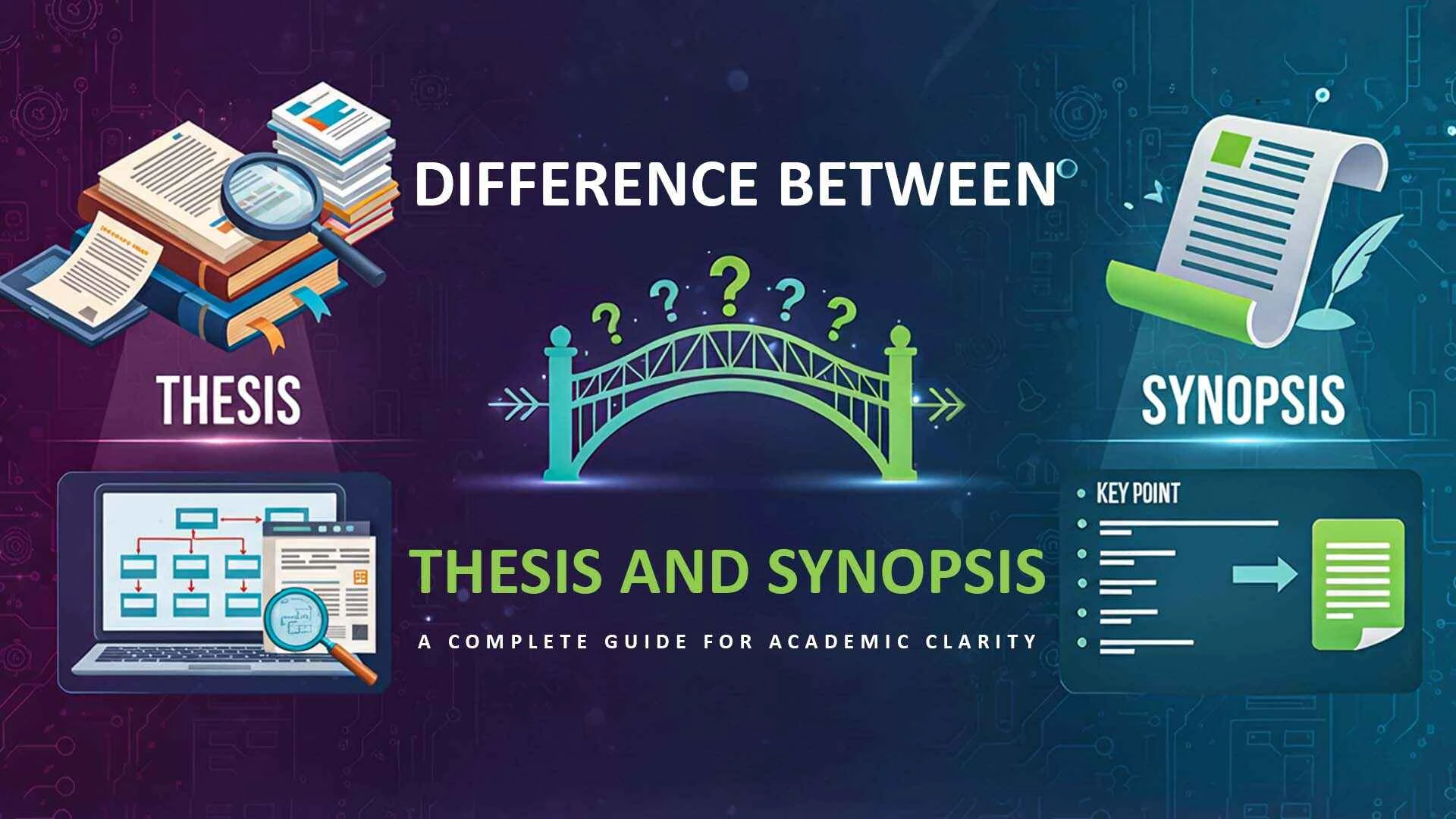
Difference Between Thesis and Synopsis: A Complete Guide for Academic Clarity
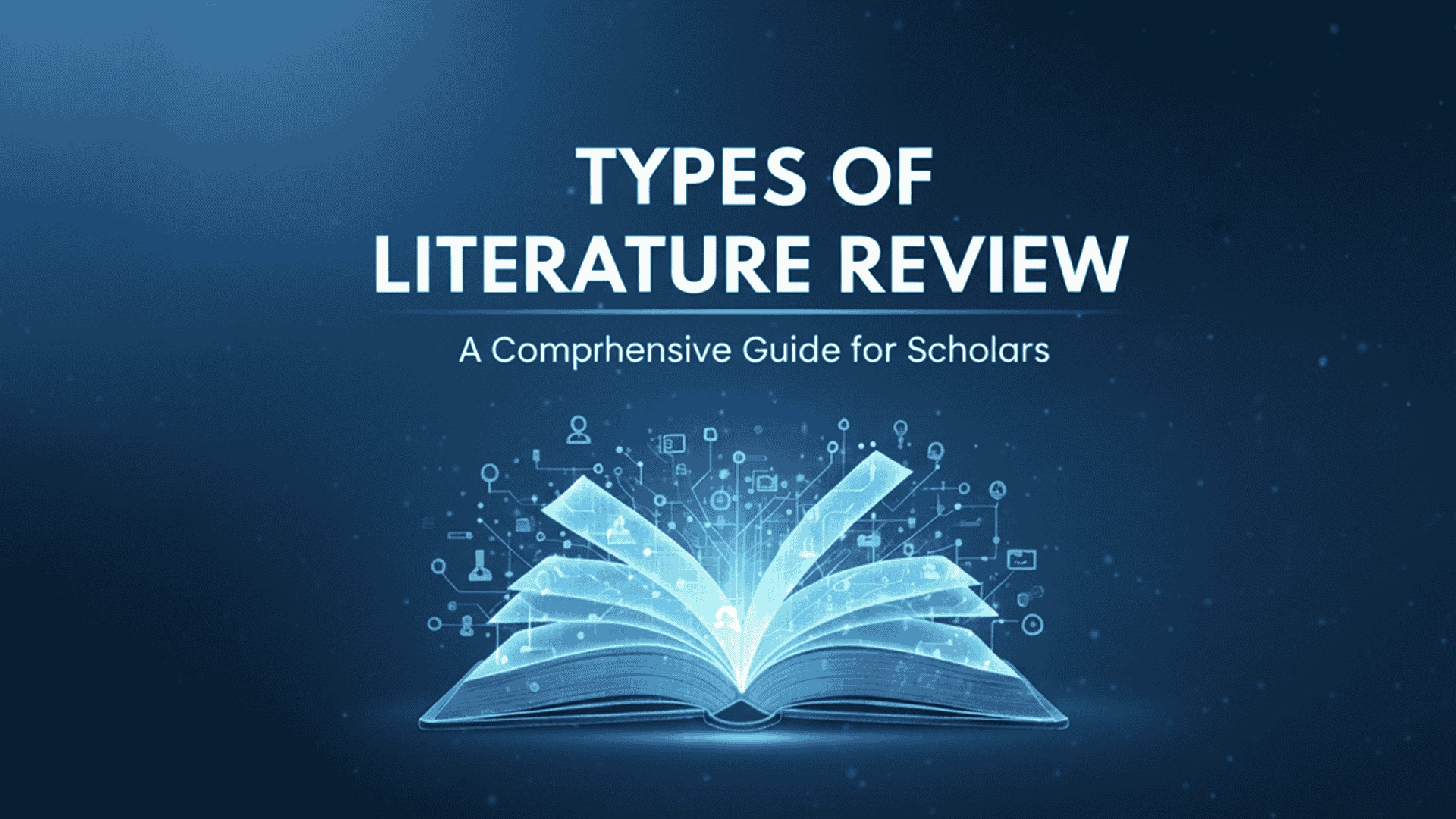
Types of Literature Review Comprehensive Guide for Scholars

Best PhD Assistance Services

The Top 6 Best Research Paper Writing Services